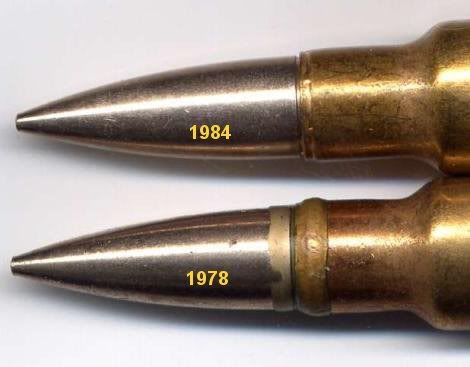Also of a safety note- the article describes a jump in pressure from 51K psi (for dry fired 1920 match ammo) to 65K psi when Mobilubricant (common automotive grease at the time) was used. And when the automotive grease was subtituted with vaseline- the pressure spiked to 71K psi. It was noted that the pressure testing device was wrecked before the receiver from which the ctg was fired. I don't know when the use of Universal Receivers began, but there may just be the chance that a well and proper heat treated Springfield survived pressure testing in the said 65,000 to 71,000 psi pressure ranges! Regardless, after reading this article- I can safely say that I personally wont be going with the old practice of externally lubing any of my cartridges.
Hatcher’s Notebook is the source of this. In 1920 the Army was experiencing something unfortunate with their rifles and ammunition. Very little information is in Hatcher’s Notebook on the 1920 troubles, but from what I read, defective Army ammunition was causing single heat treat receiver M1903 rifles to explode.
It took until 1927 when the Army decided that the one million single heat treat M1903’s in the field were having so many accidents, that the Army decided to scrap the receivers when the rifles came in for rebuild. In today’s world, leaving a defective product out in the field until rebuild time or until it injured someone, would lead to some big lawsuits, but times were different in the 1920’s.
Instead of fessing up and admitting that their defective ammunition and defective guns were the problem, the Army ran a coverup and shifted the blame to the civilians.
How else do you explain the lack of problems the Swiss had with their greased bullets. Swiss service ammunition up to the 80’s had a grease ring on the bullet and case neck. The reason they quit was that the grease caused difficult extraction in cold weather. However, if you search, you will see claims that accuracy was better with greased bullets.
For decades gunwriters have been quoting Hatcher’s Notebook as gospel, ignoring evidence that greased bullets are not an issue.
Gunwriters never discussed Hatcher’s Notebook when shilling moly bullets did they? If greased bullets are bad, then moly lube bullets are bad, right?


